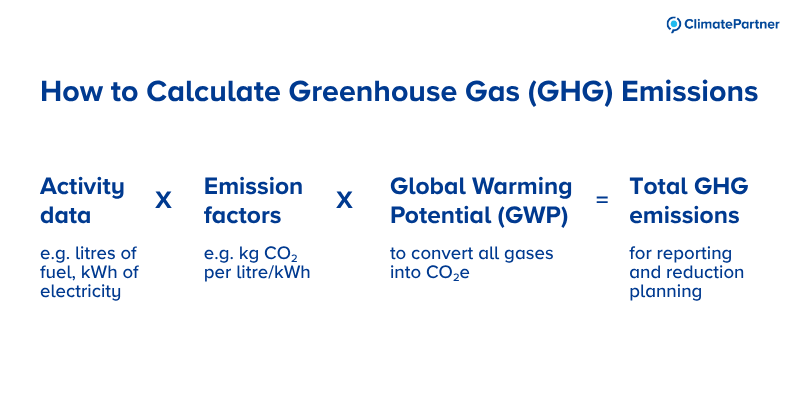What is a greenhouse gas (GHG) inventory?
A greenhouse gas (GHG) inventory is a comprehensive accounting of all greenhouse gas emissions and removals tied to a specific entity (such as a country, city, or company) over a defined time period.
GHG emissions refer to the release of greenhouse gases that trap heat in the atmosphere, including carbon dioxide (CO₂), methane (CH4), and nitrous oxide (N2O), among others. Removals are the uptake of these gases through natural or engineered processes like reforestation or carbon sequestration in soils.
A GHG inventory typically reports the net emissions in terms of carbon dioxide equivalent (CO₂e), using standard global warming potential (GWP) values to reflect each gas’s impact on climate change.
Why GHG emissions inventories matter for business
Governments and organisations develop GHG inventories for many purposes:
- Scientists and policymakers use inventory data to model climate change and design climate policies
- Regulatory agencies and businesses rely on inventories to track compliance with emission targets and identify major sources for reduction efforts
- In a corporate context, preparing a GHG inventory is a key part of carbon accounting and helps companies measure their carbon footprint (total emissions impact) while monitoring progress toward reduction goals
Developing a GHG inventory is essential for businesses to meet regulatory requirements (e.g. under the CSRD or SEC rules), prepare for investor reporting, and support net zero or science-based targets.
Emission categories: Scopes 1, 2, and 3
Emissions in a GHG inventory are categorised into three emissions scopes:
- Scope 1: Direct emissions from sources owned or operated by the organisation (e.g., fuel burned on-site or in company vehicles)
- Scope 2: Indirect emissions from the generation of purchased energy that the organisation uses (e.g., electricity or steam)
- Scope 3: All other indirect emissions in the organisation’s value chain (e.g., from suppliers, product use, business travel, waste)
Scope 3 often constitutes the largest share of a company’s GHG emissions, making it critical to include for a complete carbon footprint.

How to calculate GHG emissions
Compiling a GHG inventory involves collecting activity data and applying GHG emission factors to estimate emissions from each source. An emission factor indicates how much of a specific greenhouse gas is emitted per unit of activity, such as the number of kilograms of carbon dioxide emitted per gallon of fuel or per kilowatt-hour of electricity.
As multiple gases are included in the inventory, each is assigned a GWP to convert its emissions into a common unit of CO₂e. This allows all greenhouse gases to be compared and summed into a single total.
EPA GHG inventory (United States)
The U.S. Environmental Protection Agency (EPA) publishes an annual Inventory of U.S. Greenhouse Gas Emissions and Sinks. This national-level GHG inventory is prepared to meet reporting obligations under the UNFCCC and provides detailed, sector-by-sector emissions data.
For companies operating in the U.S., the EPA inventory:
- Sets a baseline for national emissions trends
- Informs regulatory frameworks and climate targets
- Offers publicly available emission factors and methodologies that many companies also apply to their own corporate inventories
GHG inventory support for companies
A GHG inventory is more than a reporting tool, it’s a foundation for decarbonisation. At ClimatePartner, we support companies by:
- Identifying emission sources across all scopes
- Collecting high-quality activity data
- Applying verified emission factors
- Aligning with global standards like the GHG Protocol, CDP, CSRD, and more
- Turning reporting into actionable reduction strategies
Ready to get started?